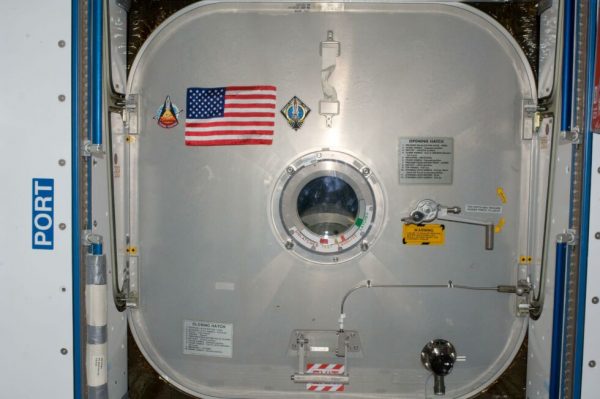Nine years ago, SpaceX called its shot on capturing the flag – Ars Technica
In the middle of the final flight of NASA’s space shuttle, President Obama called up to the International Space Station to congratulate the crew on their mission. During the call on July 15, 2011, President Obama referenced a flag the four-person crew of STS-135 had brought with them into orbit.
“I understand Atlantis also brought a unique American flag up to the station, one that was flown on the very first shuttle mission and one that will reside on the ISS until an American commercial space company launches astronauts to the station,” President Obama said.
The commander of the shuttle mission, NASA astronaut Chris Ferguson, replied that he intended to present the flag to the space station’s residents before space shuttle Atlantis departed for its return to Earth. “It will hopefully maintain a position of honor until the next vehicle launched from US soil brings US astronauts up to dock with the space station,” Ferguson said.
President Obama had a mixed record in spaceflight. He sought to push NASA away from large, lumbering, and expensive exploration programs into something more futuristic. Less time spent building big rockets—let the private sector do that—and more work on cutting edge technologies. But he and a Congress intent on keeping jobs in their districts never saw eye to eye on this, so the agency sort of drifted. What Obama did successfully push through, however, was initial and sustained funding for commercial crew.

Enlarge / Inside the International Space Station’s Node 2, the STS-135 crew presented the Expedition 28 crew this special US flag and mounted it on the hatch leading to Atlantis.
NASA
Recognizing the potential for a space race among these commercial companies during his call with the crew of space shuttle Atlantis, the president told Ferguson, “I understand it’s going to be sort of a ‘capture the flag’ moment here for commercial spaceflights, so good luck to whoever grabs that flag.”
At the time, four companies were under consideration to provide private space taxi services. In April 2011, Boeing, Sierra Nevada Corporation, SpaceX, and Blue Origin all received awards as part of the commercial crew program’s second phase. Boeing and Sierra Nevada received the largest awards at the time.
Nevertheless, it was SpaceX who seized upon the president’s telephone call to the space station. The company’s account tweeted, “SpaceX commencing flag capturing sequence.” This is known as calling your shot.
Over the ensuing years a race did develop, and in 2014 NASA made its final selection of SpaceX and Boeing to develop private spacecraft to carry humans into space. Chris Ferguson left NASA to become a senior developer for Boeing’s Starliner spacecraft. He will also fly on the vehicle during its first flight, likely to take place next year.
Meanwhile the pilot of that final space shuttle mission, Doug Hurley, remained at NASA. And as it turns out, Hurley was selected to command SpaceX’s first Crew Dragon mission to the International Space Station. That mission is now scheduled to launch on May 27 from Kennedy Space Center in Florida. It will be the first launch of humans to orbit from the United States in nearly a decade.
Ars asked Hurley on Friday if he remembered the flag. “The plan always was that the first US vehicle to launch from Florida and come to the International Space Station would grab that flag that flew both on STS 1 and STS 135, the first and last flights of the shuttle program,” he replied. “I think we will probably grab it, and put it in a safe place while we work on board the space station and then we’ll bring it back when we come back this summer.”
We will be exceedingly disappointed if, upon splashdown of a successful Crew Dragon mission, the SpaceX account fails to tweet, “Completing flag capturing sequence.”






